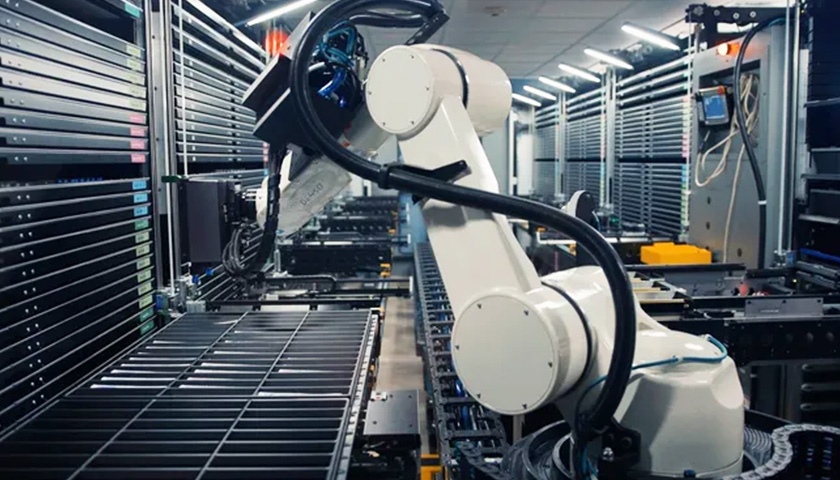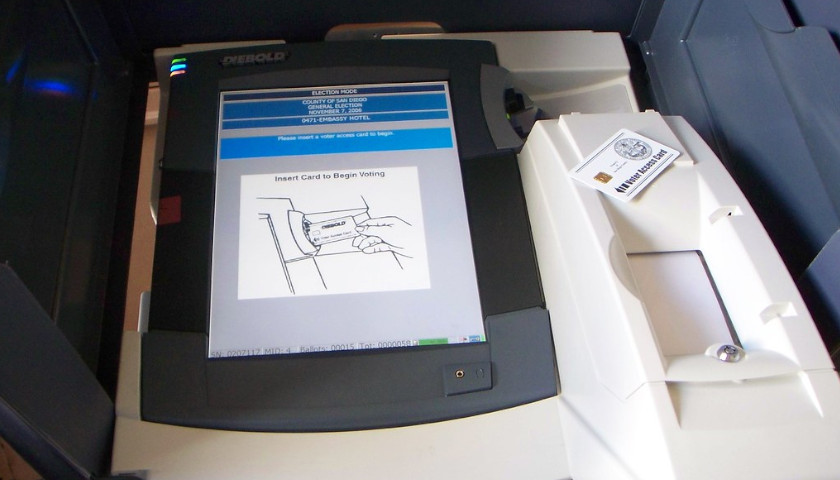Hospital pharmacies around the state have begun implementing robots to distribute inpatient medication orders to minimize human error.
The XR2 Automated Central Pharmacy System, manufactured by Omnicell, was first introduced in 2017. The 30-foot-long robot is capable of dispensing thousands of inpatient medication orders daily.
According to Omnicell, the company’s purpose is to solve complex issues with a simple aim: to give nurses, physicians, and pharmacists more time to care for people, safely.
Omnicell states that refilling and sorting medication orders into automated dispensing cabinets are some of the functions of the XR2. Completing these duties makes pharmacists more available to spend time with patients and opens up staff to become more efficient and effective in their roles.
Justin Gamble, director of pharmacy services at the Christ Hospital Health Network in Cincinnati, Ohio utilizes the XR2 in his pharmacy. He told The Ohio Star that the robot is able to do the manual tasks leaving the staff free to be allocated to other duties and to improve patient interaction.
“We want to get more of our technicians up on the floor with the nurses and have our pharmacists working at the top of their license, leaving some of the more manual tasks to the robot,” Gamble said.
The technology is very accurate, which enhances patient safety, Omnicell said. The robot has trays that place the drugs into any open spot, and its technology tracks where the medication was placed as well as its expiration date, to avoid waste. It also will scan and pull medications for patients, bag them and seal them, and label them before dispensing each bag for the pharmacy to dispense to patients. Additionally, the XR2 will notify the pharmacy about medications that are not being utilized or moved so that the pharmacy can pull the medications from the machine and potentially discontinue carrying them in the pharmacy if not needed.
“Prior to having robots, there was still a lot of manual picking of medications. Any time you have a manual process you can have opportunities where someone picks the wrong medication. Using robotic technology is based on barcodes. Robots don’t make mistakes,” Gamble said.
In order to receive approval from the Ohio Board of Pharmacy, the droid has to prove it is 99.9875 percent accurate over a 45-day trial period. All of the XR2’s work must be checked during that duration. After that, 5 percent will need to be checked for errors.
Additionally, there are quality checks to be done on each prescription leaving the pharmacy, and each prescription is scanned multiple times to ensure accuracy.
Gamble told The Star that their facility has been utilizing the robot since June and since then have been dispensing approximately 5,000 doses daily. Since the go-live, his pharmacy has dispensed about 600,000 doses with no errors.
According to the National Center for Biotechnology Information, 10 percent of hospital patients will experience a medication error. The robot can take the human error out of filling prescriptions and eliminate the drastic expense associated with such errors.
Utilizing robots will allow for more efficiency but is not anticipated to have an effect on staffing, according to Gamble, as the staff will be enabled to focus on other tasks without the added duty of pulling and bagging medication.
The medication-dispensing robots are currently being utilized in Cincinnati, Dayton, Akron, Columbus, and Lima.
– – –
Hannah Poling is a lead reporter at The Ohio Star and The Star News Network. Follow Hannah on Twitter @HannahPoling1. Email tips to [email protected].
Photo “XR2 Robot” by The Christ Hospital Health Network.








